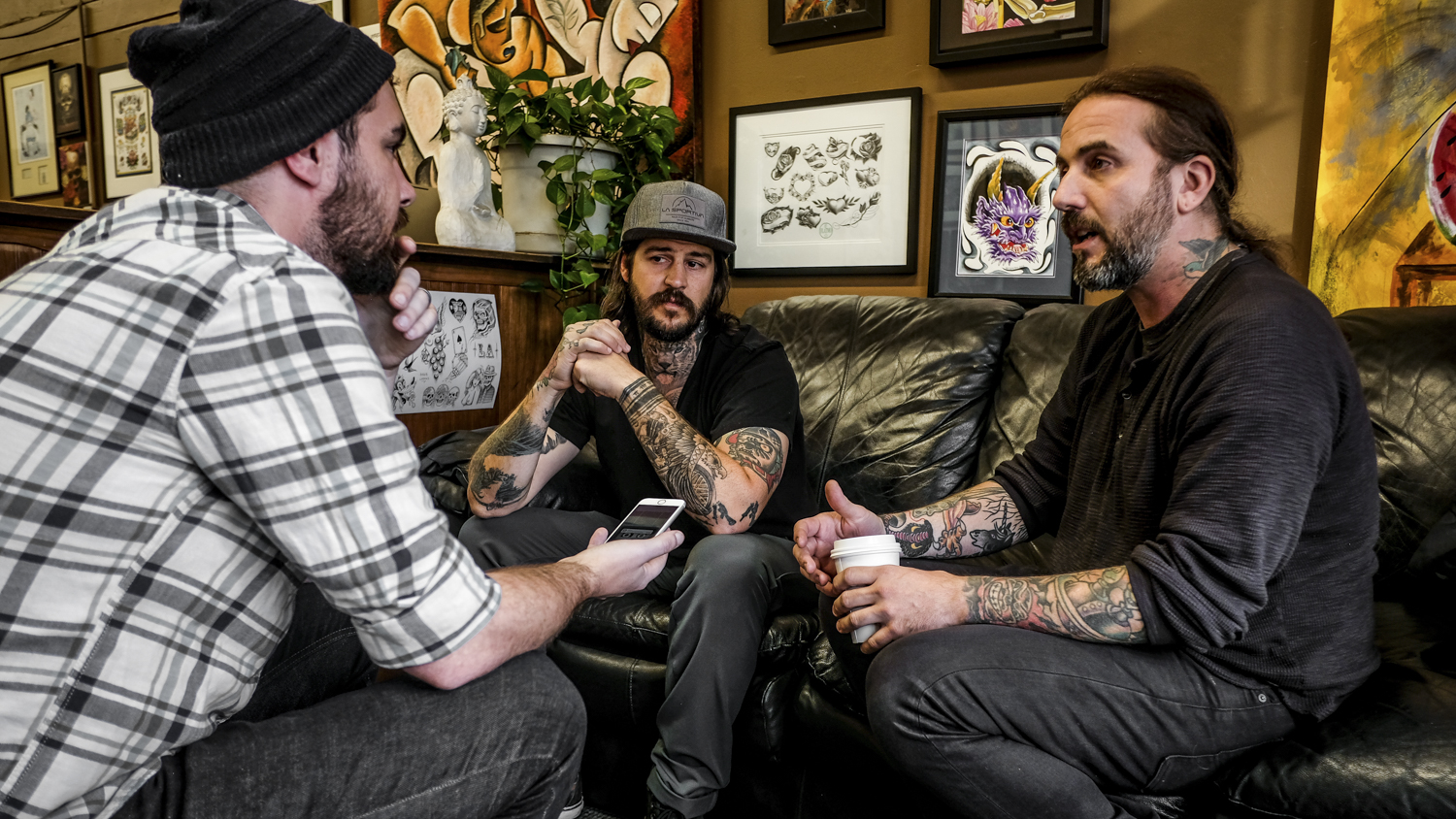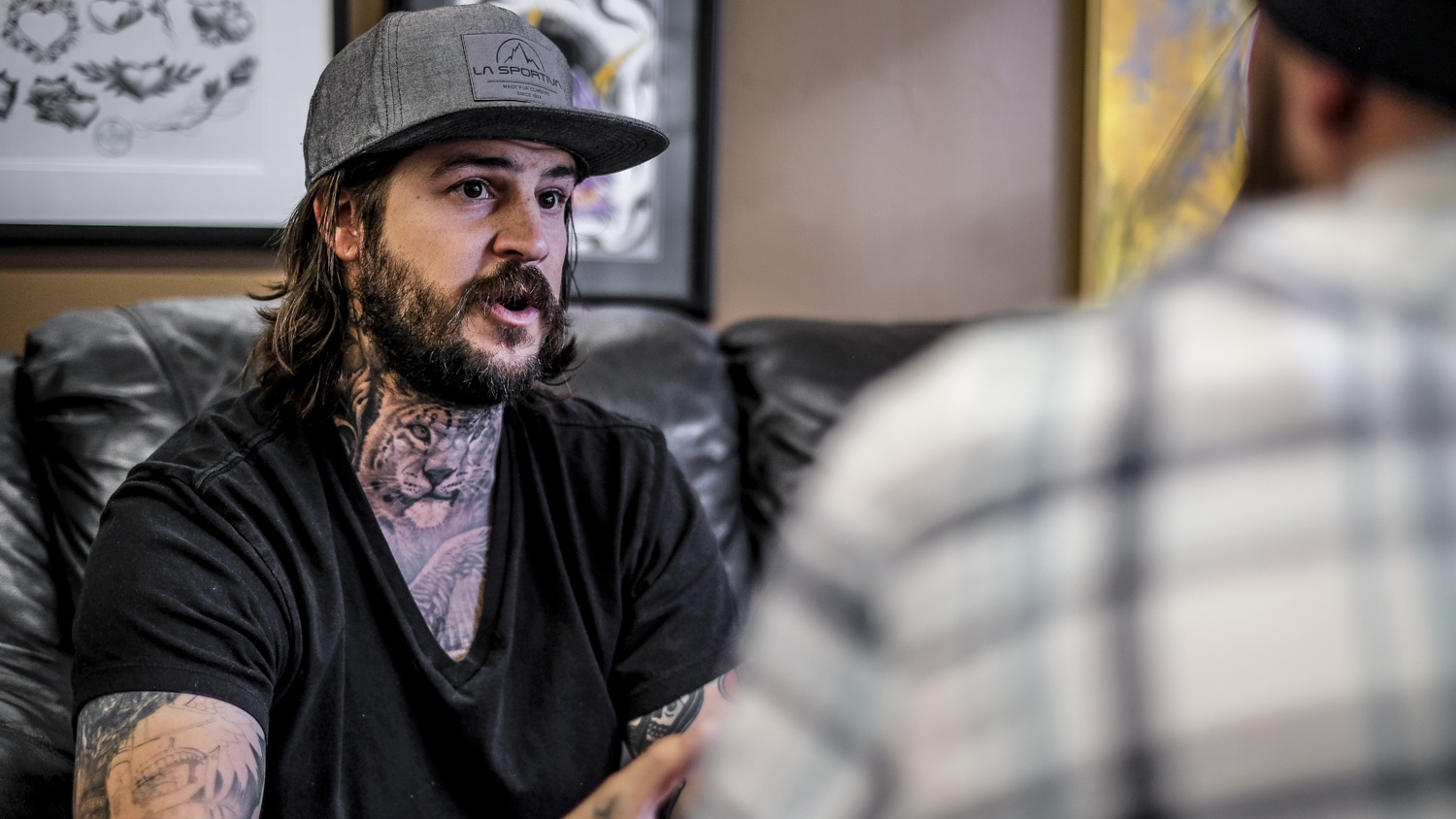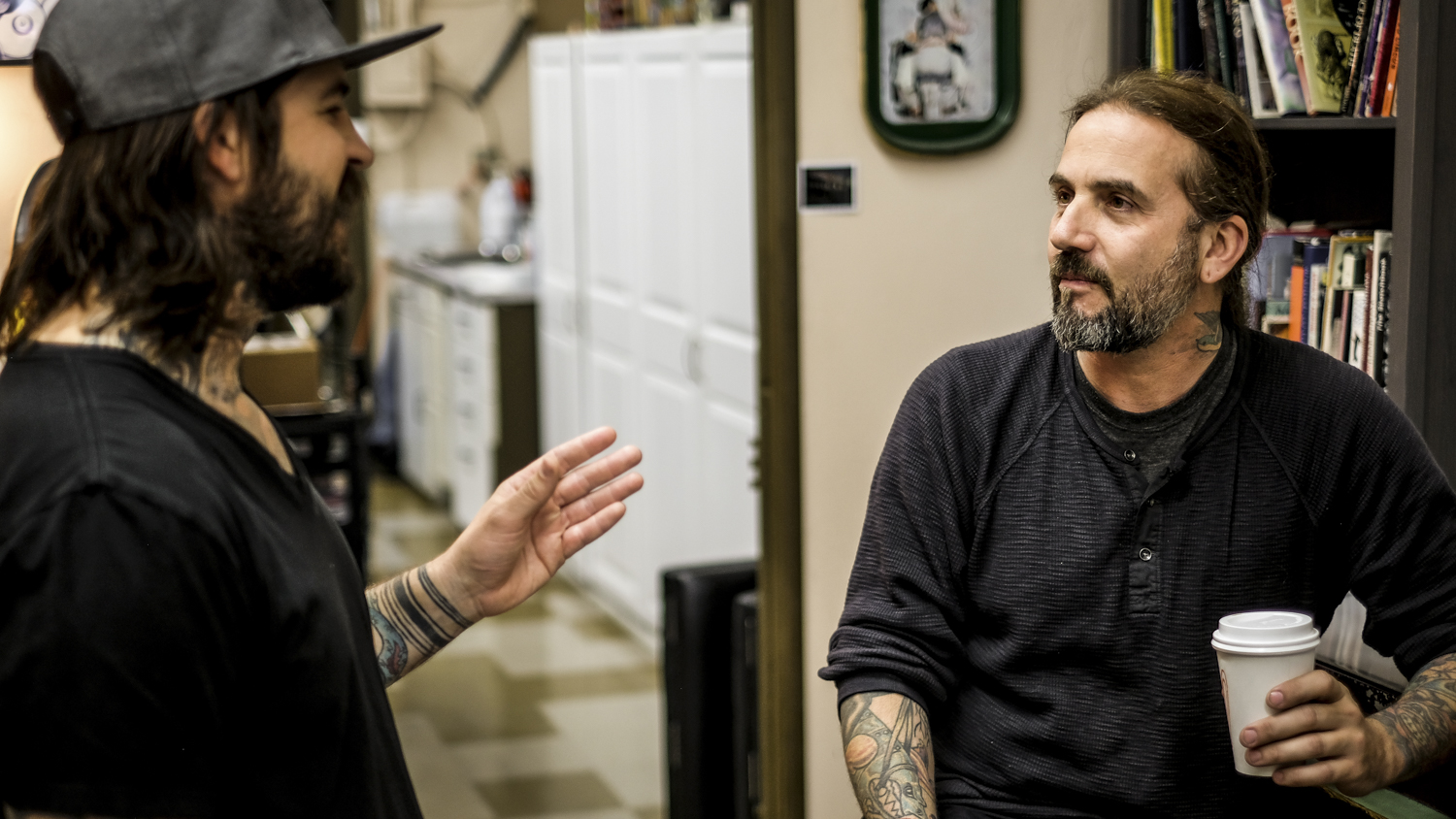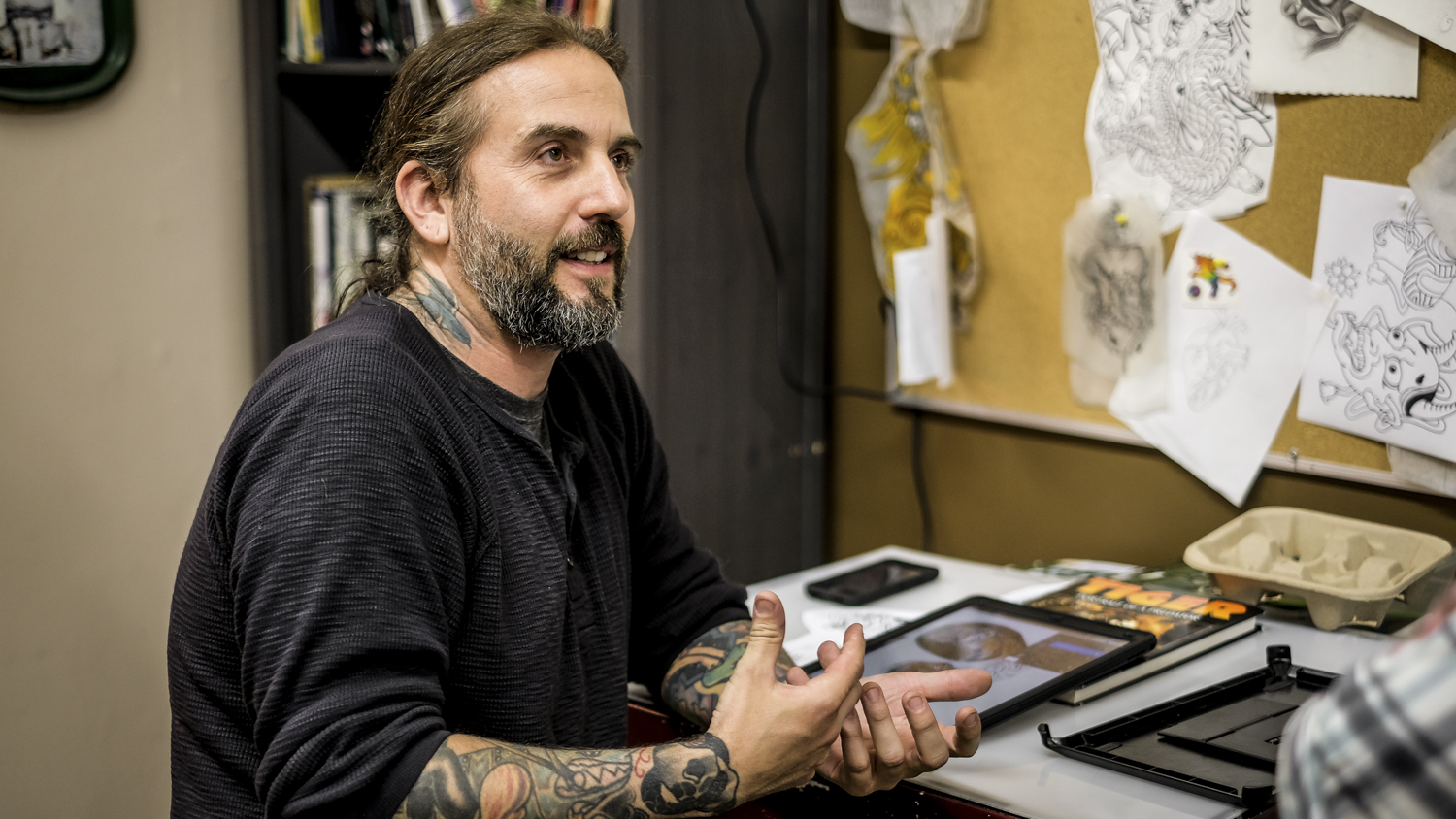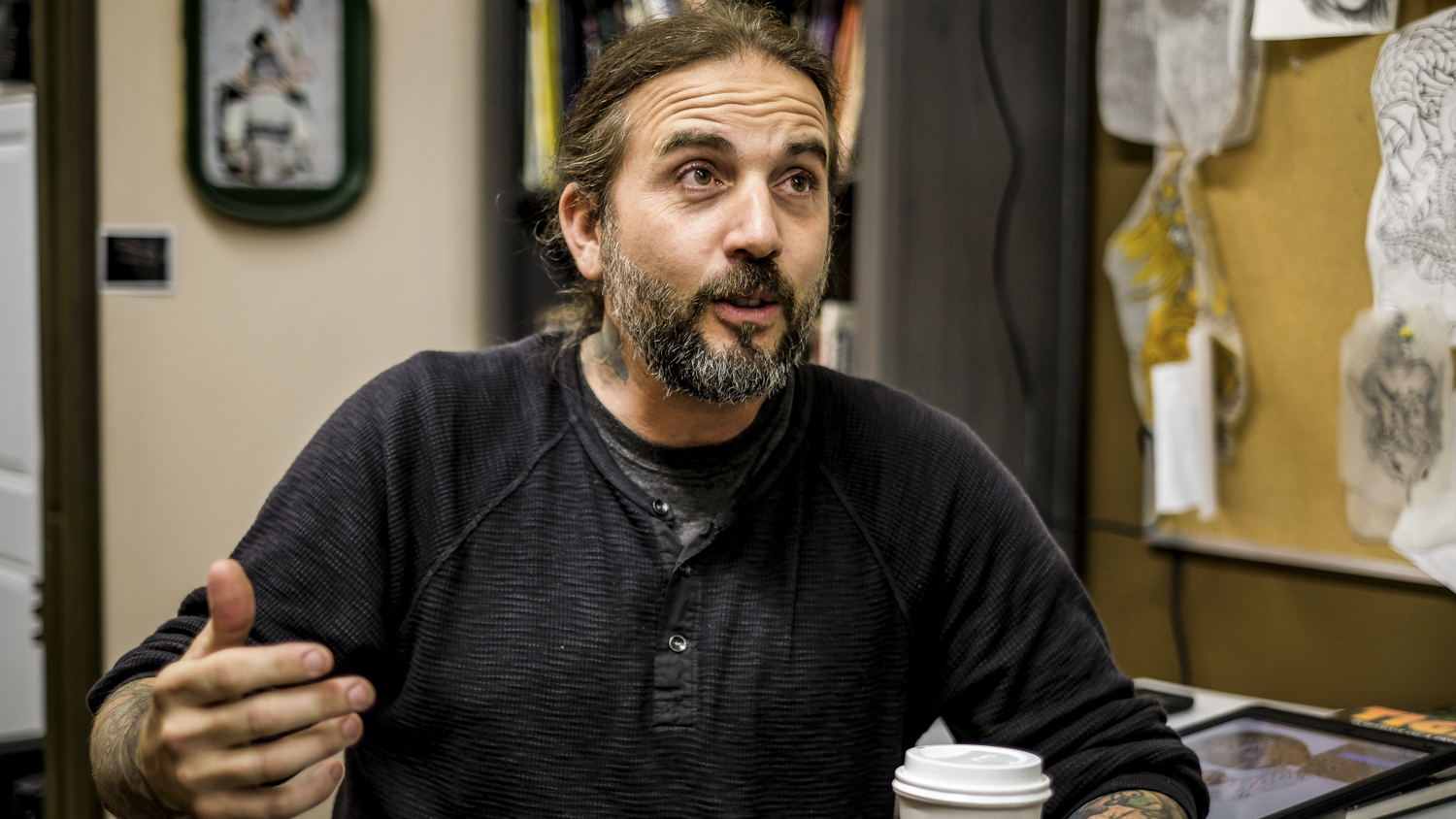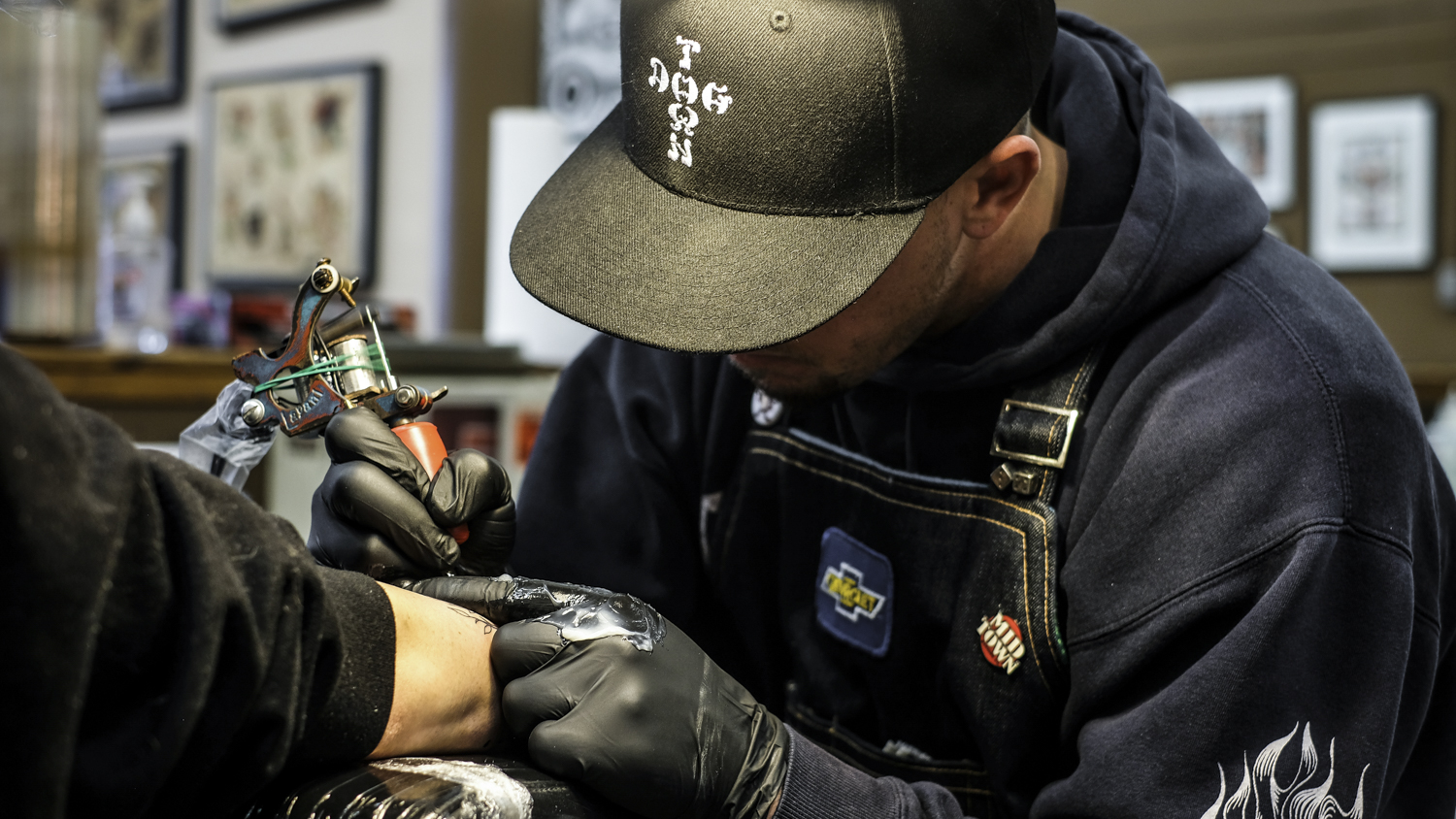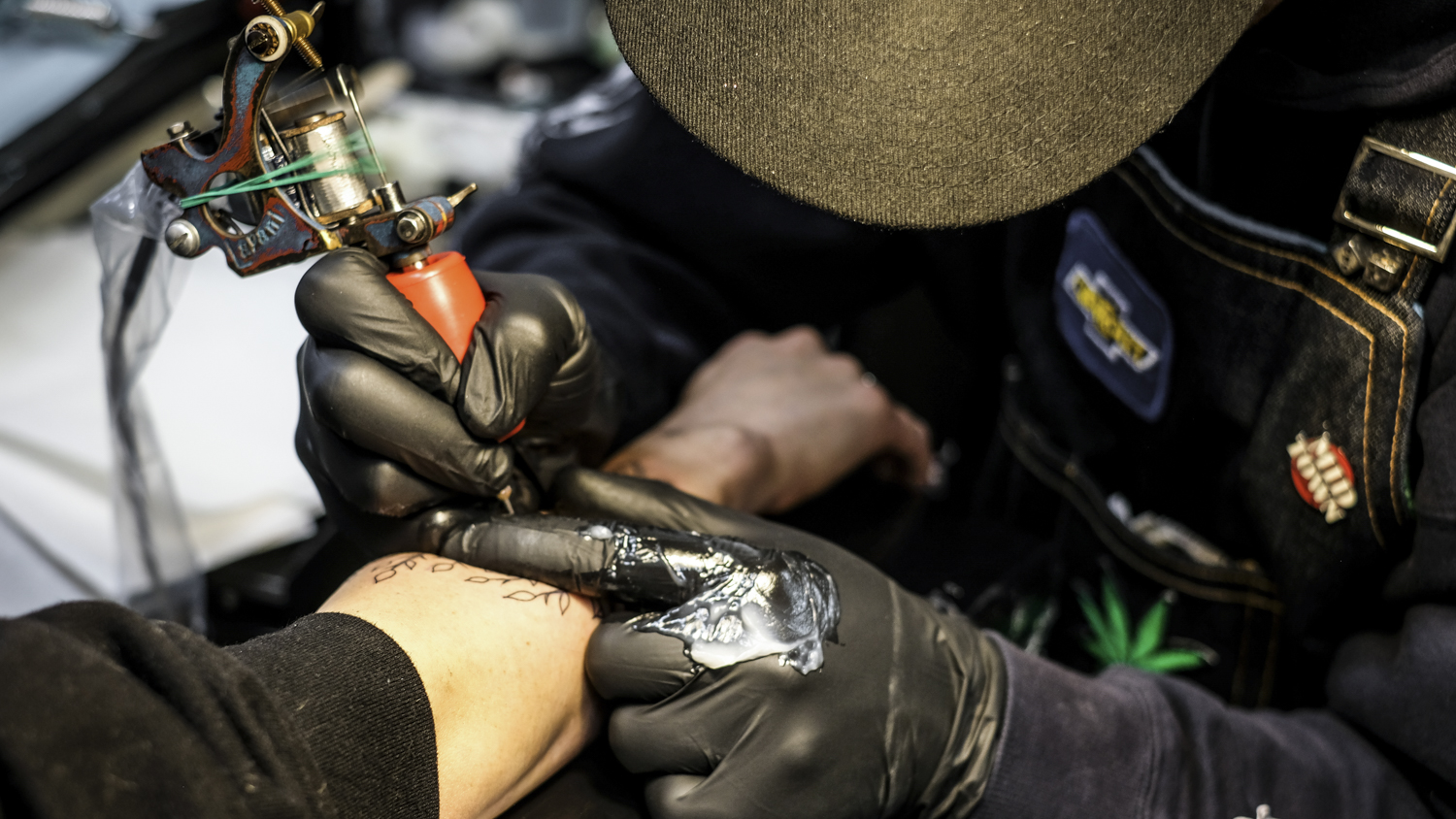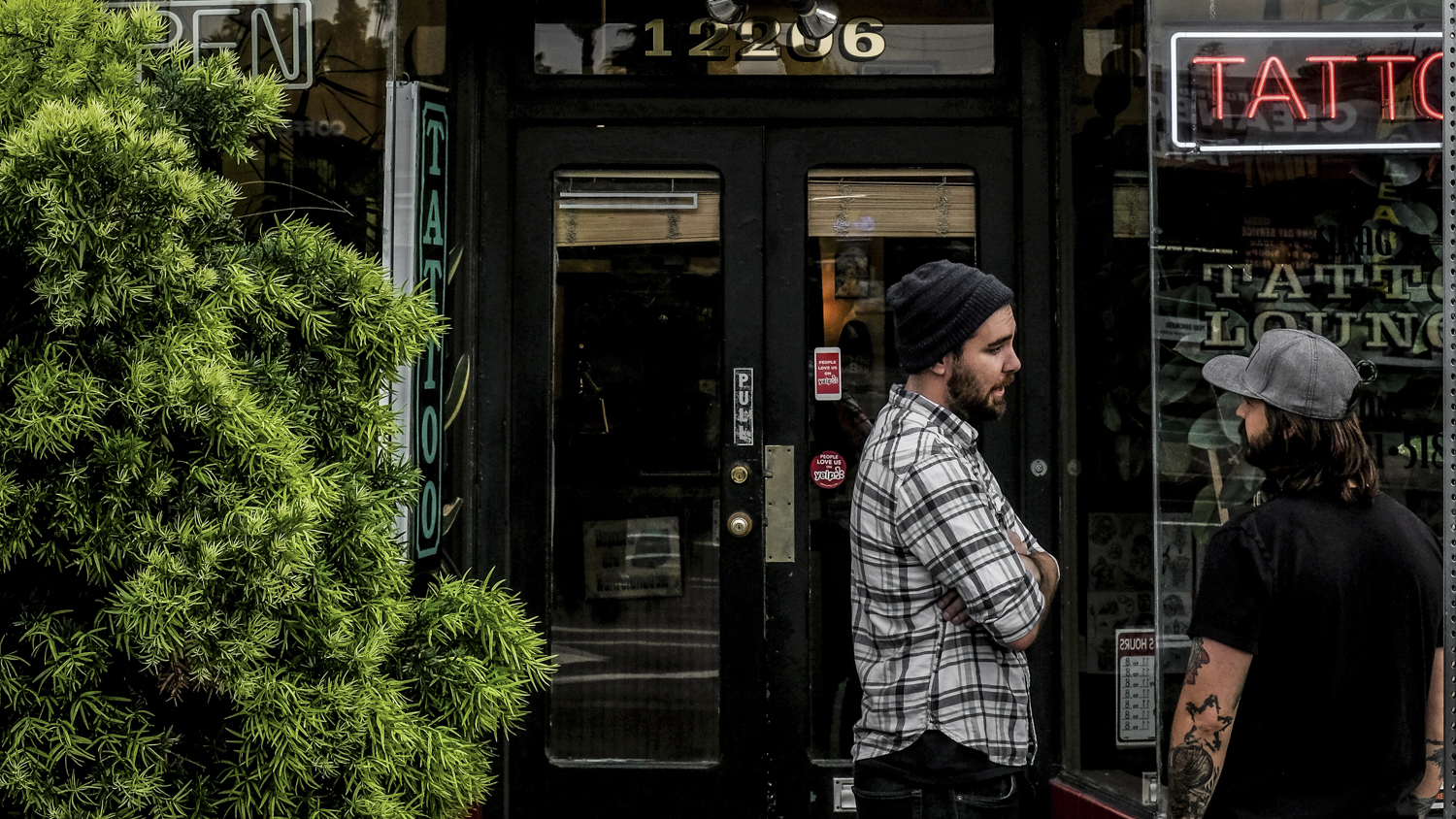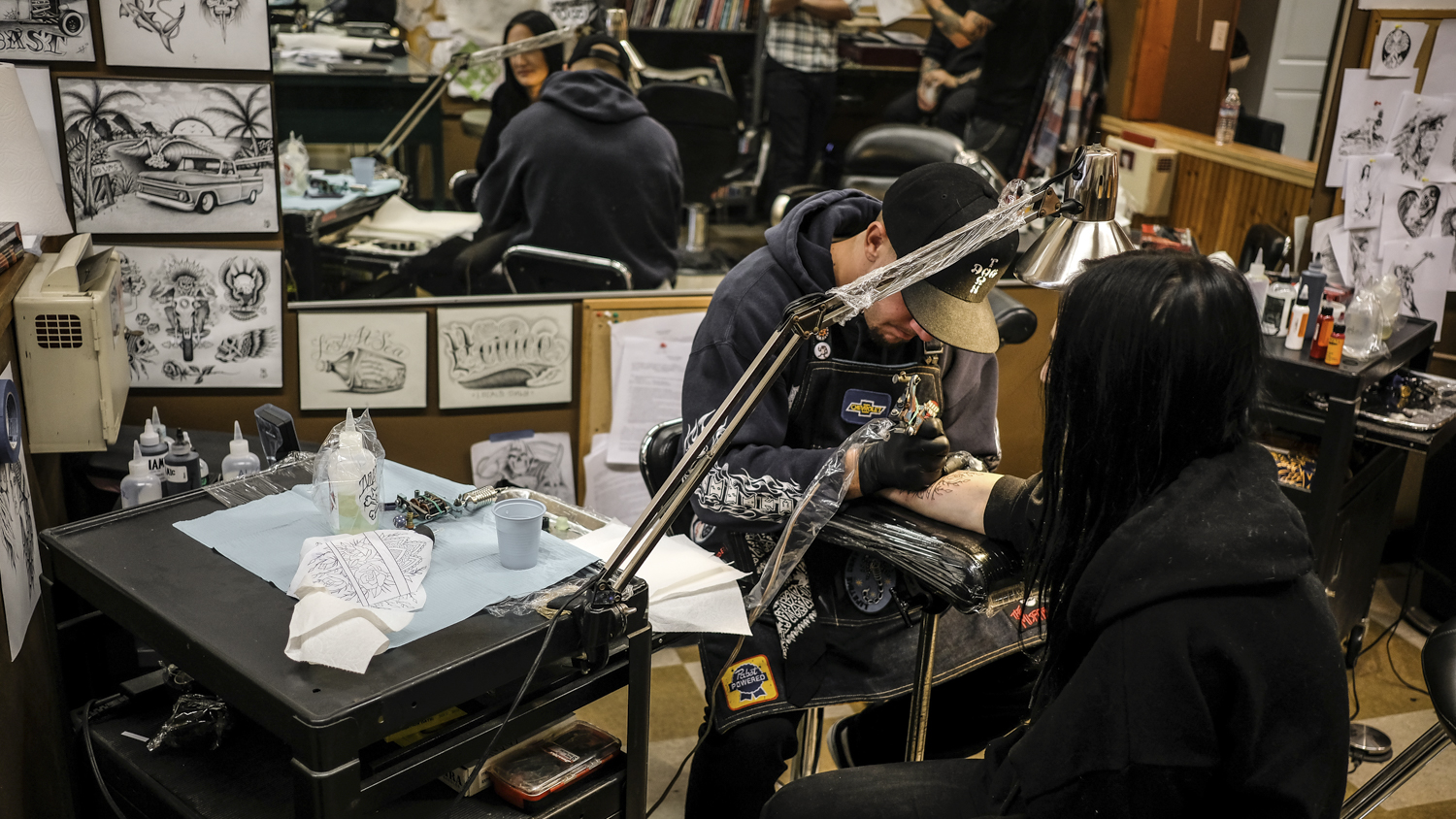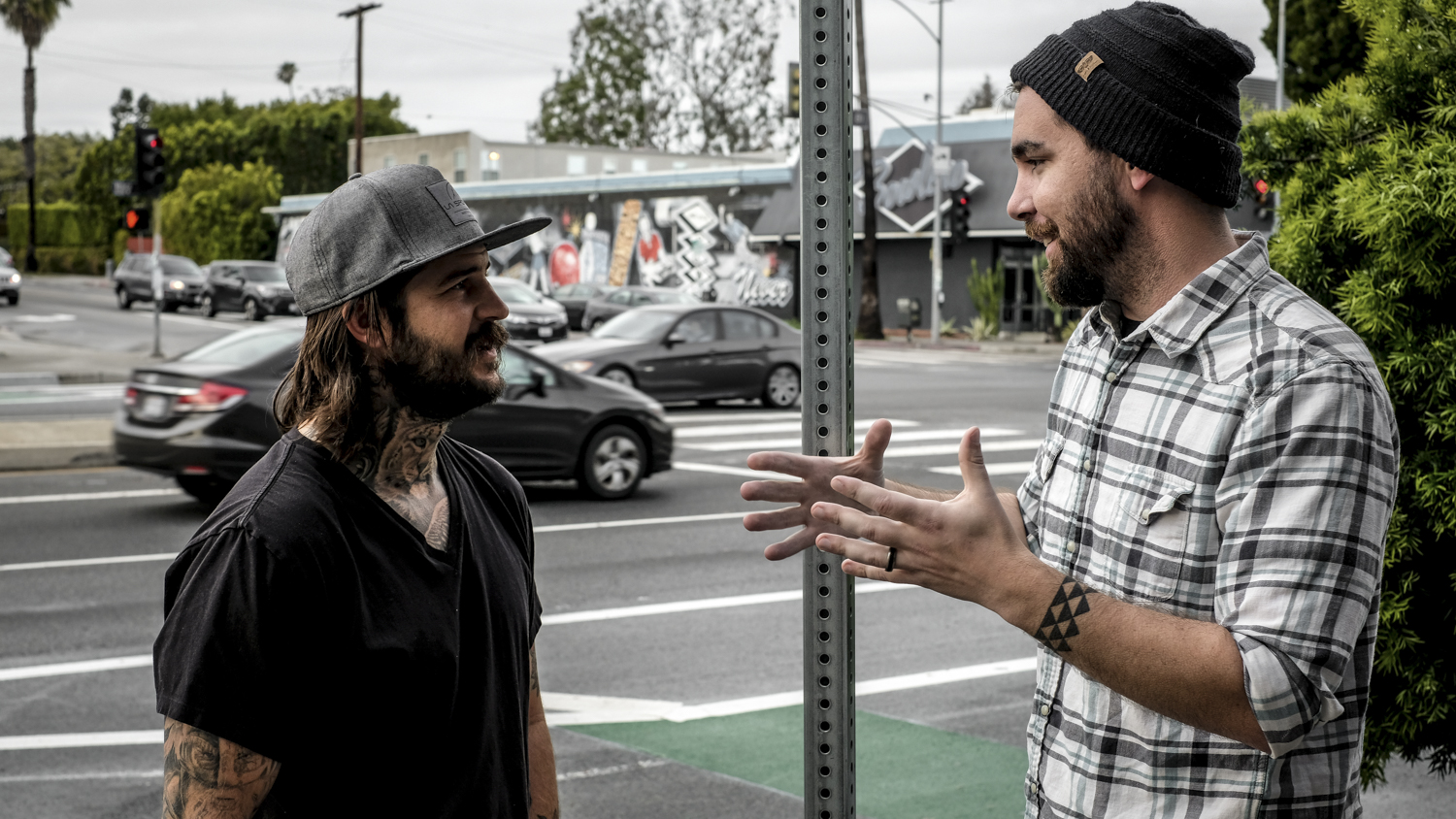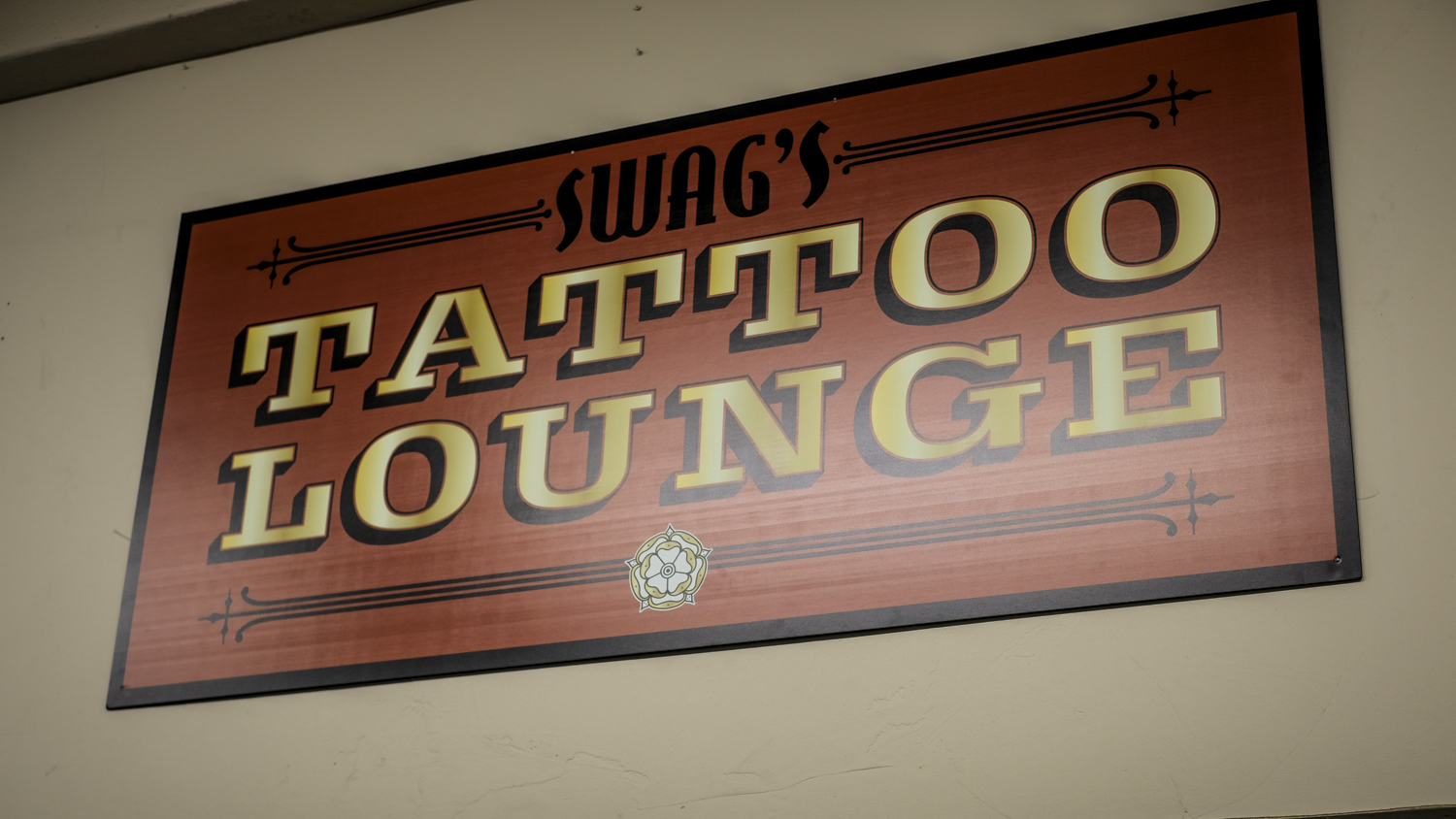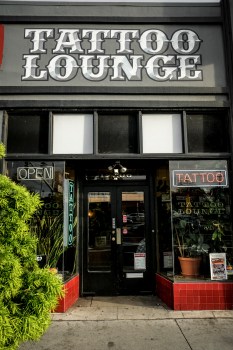Ubiquity is defined as “appearing everywhere or of being very common,” and if you look at the throngs of people along Sunset Boulevard, walking the Santa Monica Pier, or strolling up and down Rodeo Drive in Beverly Hills, tattoos appear ubiquitous. Most would brush the omnipresence of tattoos off as a common site in a progressive city. However, look closer at the breadth of work, the artistic expression developed in each piece, and the depth of meaning, and the art form varies greatly from person to person. The very opposite of common.
Los Angeles is a city that has always pulled in artists from around the world. Actors, writers, painters, sculptors, and dreamers have given the city its unique heartbeat of wonder and creative expression. Fighters of conformity. Counter-culture at its finest. And while the city is known more for traditional art forms such as those mentioned above, that artistic pulse is just as true with the city’s multitude of fantastic and fanatical tattoo artists. Its creative rhythm has bred one of the most vibrant tattoo scenes in the world. Here, styles, artists, and tattoo history seemingly permeate the skin of the city and its residents far more than any other dropped pin on Planet Earth.
Wishing to gain further insight into what makes Los Angeles such a great tattoo hub, we sat down with Patrick Thomas and John Saletra of The Tattoo Lounge. The pair have differing styles and opposing thoughts on the present and future of the tattoo culture. We talked about Los Angeles’ tattoo history, what makes a good tattooer, what makes a good tattoo receiver, and where they think the art is going.
The Manual: What brought you both to Los Angeles?
You’ll find a ton of open-minded people here and allows a lot of personal growth with art.
John Saletra: I’m originally from Ohio. And I grew up looking at tattoo magazines which progressed into me starting tattooing when I was 19. But what really hooked me was looking at those magazines and seeing Los Angeles and Greg James, who tattooed at Sunset Strip Tattoo which was the place to be, and his work with the guys from Mötley Crüe, it left an impression on me. Of course Southern California is also the greatest place on the planet.
Patrick Thomas: You know, Los Angeles lured me in. I said, “If I’m going to tattoo, I’m going to tattoo in the most saturated, artistically driven area of the country because it’s going to force me to be on top of my game as a tattooer and constantly progress.”
TM: What makes Los Angeles such a hub for tattooing?
PT: I just think it’s a very progressive and laid-back city. Everything is approached in such a more casual manner, that for me, with that type of support for the arts and support for “You just do you,” or “Oh, you want to try that? Go for it!” there’s something available for everyone. So, when it came to artists thriving here, it just made sense that tattooing would become part of that artistic community that’s going to thrive. It’s going to bring people from all over.
TM: How has the city’s tattoo culture evolved?
JS: I moved here 17 years ago and the thing I immediately noticed when I moved here was, if you’re into tutu-dancing to polka music while wearing a fur bunny costume, you’ll probably find a thousand other people in this city who are also into it. And how that translates to the tattoo world is that if you’re into something, you’ll find other people who are into also. You’ll find a ton of open-minded people here and allows a lot of personal growth with art. But in an historic context, there were a lot of great artists who came to the city early on.
They set the groundwork for what we have now. I feel that as a major city, a tattoo city, without guys like Robert Benedetti, Greg James, and Bob Roberts, and Leo Zulueta, they created a hub of tattoos and planted a seed in the 1980s and we’re seeing such a growth of it now because of them. They not only set the city on its path toward a hub of great tattooing, but also planted a seed of what the customer could expect from the tattoo artist. It was more than just average. It was art. They could ask for more.
PT: More than just the flash piece on the wall. They’d design something for you. Something individual.
JS: Right. It’s great that customers can now ask for more because it pushes an artist’s quality and indeed the art form. Without those guys spearheading this “more” idea, Los Angeles might not be as great as it is now for tattooing. That’s really the progress I’ve seen for the city, but the art has evolved too.
PT: To that end, equipment was pushed by these guys as well. Better needle groupings and inks were developed to be able to actually tattoo these more intricate designs as the art progressed. The combination of better quality ink, machines, needles, have increased our ability to do things that years ago we couldn’t even think of.
JS: There are very few limitations to what we can do, beside the medium: skin. That’s the only limitation that will never go away. But color and technique can be pushed further.

TM: How have you both viewed people’s growing acceptance of tattooing?
PT: I think that’s definitely part of the Los Angeles place thing. Coming from the Midwest, I was concerned about getting tattoos on my arms because of job purposes. When I first moved here, I figured people would do their standard judging and wouldn’t be able to move on. +But during those first transition months, looking for a basic retail job while waiting for an apprenticeship, the retail places were very “Wow, that’s cool you have tattoos.”
Seeing the difference between the Midwest and here is wild. It’ll obviously catch up there, but it’s going to take awhile. Here, everyone’s accepting.
JS: [Laughs] I think you get thrown out of Southern California if you don’t have tattoos. It’s part of every rental contract I think.
TM: What’s the future of the art?
JS: I honestly don’t know. Every time in the last 20 years when I thought, “This is it. This is it. It can’t possibly get even more popular, it can’t progress more than it is.” It just keeps getting bigger and going to a new level. I’m surprised every year on the quality of work. There’s definitely a lot of change from the old-school tattoo shop pick-them off the wall to custom pieces.
I see all tattoos as art. This is all art. It is interesting to hear everyone’s opinions on it, but just as all art is subjective, so are tattoos.
But there’s also some level of where things do work in a circle. Where things can be custom, but they’re custom versions of those original iconic designs. Part of it is also, while it’s amazing to see tattoos that look like oil paintings, for me, some of the charm is lost as it almost doesn’t look like a tattoo anymore. There’s a certain thing going on now, there’s this painterly quality going on, there’s just something missing. Maybe that should’ve been a painting on the wall. But again, that’s just my perspective.
PT: But I think that’s part of the beauty in these new pieces. The idea of , “You know what, I don’t want that on the wall. I want that on me.” And that can be done. It’s neat. I see what you’re saying, and we go back and forth. You say, “You tattoo art, I tattoo tattoos.” I don’t see that line. I see all tattoos as art. This is all art. It is interesting to hear everyone’s opinions on it, but just as all art is subjective, so are tattoos. They’ve fully fallen into that category now.
JS: At the same time, everyone has a unique style. And every tattooer has their own unique style. It’s such a great thing to search out and connect with the artist. The choices are endless. It’s tough. It’s hard to pick an artist and pick an artist you connect with. But there are thousands of artists out there.
TM: How would you suggest people new to tattooing find an artist?
JS: Get off their ass and walk into a shop. You can find people through social media, but you have to talk to the artists.
PT: Every person is different. Some people shoot me an email or [direct message] and I can connect differently than them just walking off the street. I do a lot of outdoorsy stuff and that seems to connect with a lot of my clientele. They then come in and we can talk about it. There’s already a connection that they feel with me. I think that it’s amazing that we have a tool to have our personalities come across and connect with people.
JS: I’m showing my age, aren’t I? [Laughs] I want them to write me a handwritten letter, put it in the mailbox, wait two to three weeks for me to get it, then wait for me to write them back!
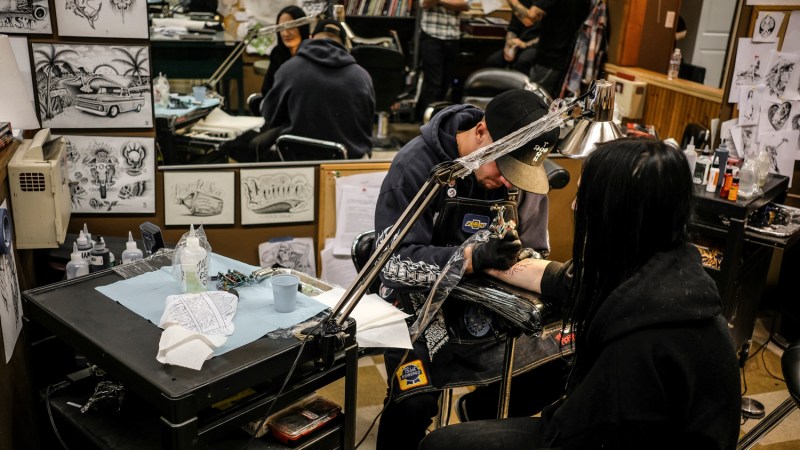
PT: [Laughs] That’s part of it. It’s bridging the gap. There are people who want to come in and talk about it and give them peace of mind of the artist’s abilities and personality. It’s definitely an individual basis. But a lot of the time, it’s readable in the emails or DMs. There are people who send really structured emails and have loads of questions and I know I have to set time aside to talk with them to work through all those little details.
JS: It’s also more worthwhile to talk and work with the client. You don’t want someone just to say, “Here’s your time slot.”
PT: “Here’s the money, bye.” You don’t want that. It’s also more fun to talk and get to know people. Plus, you may get them to come back. I mean, you’re already hurting them with a needles, you might as well have a great conversation and experience. Making sure you spend quality time with each client, and making sure both you and they feel the experience was special, because it’s definitely special to them. Make them feel at home as possible.
My best advice would be don’t ever feel pressured to get one from the first artist you talk to. Also, don’t ever feel pressured to just get the tattoo they trace onto your skin. Get it where you want. Get the tattoo that you want. Give the artist your honest opinion. It’s going to be on you forever. Be honest.




